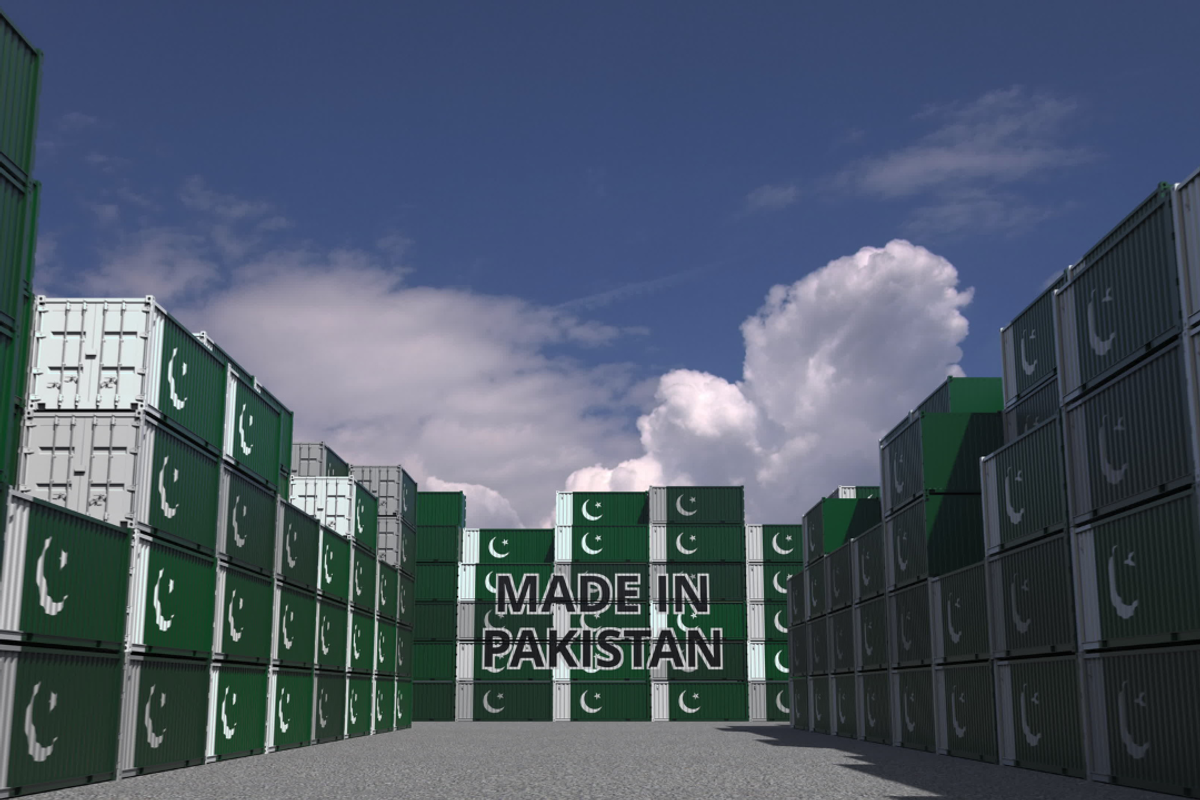Tariff turbulence: Can Pakistan seize the moment?
With competitors like China, Bangladesh, and Vietnam hit harder by tariff hikes, Pakistan's relatively lower duties open a narrow window of opportunity

Haris Zamir
Business Editor
Experience of almost 33 years where started the journey of financial journalism from Business Recorder in 1992. From 2006 onwards attached with Television Media worked at Sun Tv, Dawn Tv, Geo Tv and Dunya Tv. During the period also worked as a stringer for Bloomberg for seven years and Dow Jones for five years. Also wrote articles for several highly acclaimed periodicals like the Newsline, Pakistan Gulf Economist and Money Matters (The News publications)

Shutterstock
As global markets reel from the shockwaves of the United States' sweeping reciprocal tariffs, Pakistan finds itself in a unique position — both challenged and oddly advantaged.
With competitors like China, Bangladesh, and Vietnam hit harder by tariff hikes, Pakistan's relatively lower duties open a narrow window of opportunity to expand its footprint in the U.S. textile market.
But seizing this moment won't come easy. Strategic policy moves, export diversification, and cost-cutting reforms will be crucial to turning this tariff upheaval into a competitive edge.
Capturing a larger share?
These steps going forward could help Pakistan capture a larger share of the U.S. market, despite the broader challenges posed by tariff shifts, according to a report of brokerage house Arif Habib Limited.
The report said Pakistan should also look into exploring preferential trade agreements in sectors where it already has a competitive edge, such as textiles, surgical instruments, and sports goods.
Diversification of export markets is another critical strategy — over-reliance on the U.S. market exposes Pakistan to fluctuations in U.S. trade policies. Pakistan should therefore focus on expanding trade with other markets such as emerging markets in Africa, South Asia, and Latin America.
Reducing domestic production costs is crucial for enhancing Pakistan's competitiveness. Energy costs and high interest rates are major concerns for industries, especially in manufacturing. Addressing these challenges swiftly and effectively will determine how well Pakistan can improve its industrial output and overall economic performance, it added.
Market observers do not foresee any reciprocal tariffs for the services industry whereas semiconductor, metal, and pharmaceuticals would remain exempt from these tariffs. However, textile exports would come under pressure in the current fiscal year.
Moreover, any pressure on the Pakistani rupee would benefit export group, especially the IT sector.
The U.S. has presently not targeted services imports given its services trade surplus of nearly $300 billion in 2024 compared to its goods trade deficit of over $900 billion. The U.S. has been a key market for IT services, constituting 50% of Pakistan’s IT exports in fiscal year 2023-24 (FY24). In FY25's eight months, the share increased to 57%.
Pakistan textile export competitors have also been affected by the reciprocal tariffs. Within the top four exporting nations, Pakistan will have a cost-advantage over China (34%), Vietnam (46%) and Bangladesh (37%), an analyst from BMA Capital said.
Pakistan, however, will be at a cost disadvantage over India (26%), and Turkey (10%). India has announced plans to adjust US import tariffs to support its export industry. Vietnam also plans to counteract the issue by reducing taxes on US imports. Given Pakistan’s priority towards expanding its export base, we may see similar actions taken by the country, the BMA Capital analyst said.
During FY24, Pakistan exported $5.43 billion worth of goods to the U.S., the bulk of which comprised textile products. During eight months of the current fiscal year, Pakistan exported $4 billion worth of goods, recording a 10% increase from the preceding year.
Under the services ambit, Pakistan exported $2.55 billion worth of services in FY24, around 65% of which fell under the IT services industry. During eight months of the current fiscal year, services exports to the US surged by 35% to $2.17 billion, of which $1.42 billion constituted IT services.
The US reciprocal tariffs intensified volatility in global markets, given their implication for global trade. Notably, oil prices are down nearly 4% to $72 per barrel while gold continues touching newer highs ($3,126 per ounce). Moreover, the Japanese Yen, a safe-haven currency, has appreciated by over 3% the past week.
“Given our trade surplus with the US, the tariffs have the potential to reduce the trade balance,” the BMA Capital analyst said. “We may see pressure build on the Pak rupee, affecting import-dependent industries (steel, automobile, cement etc),” he added.
Pakistan's textile sector
Within the listed space, Interloop (ILP) has the highest share of textile exports to the U.S. ($ 286 million), constituting 53% of its exports and 51% of its total sales. For Kohinoor Textile, 55% of its exports and 18% of its exports comprises sales to U.S. markets.
Discussions with industry personnel suggest that exports to the U.S. will come under pressure in FY25 and onwards, the brokerage house assessed.
In textile, Pakistan largely competes with China, India, Vietnam, Cambodia, Indonesia, and Bangladesh. The duties imposed on China, Cambodia, Indonesia, Vietnam and Bangladesh are higher than Pakistan, while duties imposed on India are 300 basis points lower than Pakistan (26% vs. 29%).
The type of textile products Pakistan is exporting to the U.S. are also exported by India; which has a duty advantage. The similar products are also supplied by Bangladesh, Vietnam and China which have duty disadvantage, according to a report by brokerage house Topline Securities.
“We believe, theoretically, due to Pakistan's duty disadvantage with India, Pakistan textile exports may face some pressure, however, higher duties on Bangladesh and Vietnam shall provide some respite to Pakistan exports in U.S.,” a Topline Securities analyst said.
Additionally, competition in the European market can increase as countries faced with higher tariffs i.e., China, Vietnam and Bangladesh may now divert some of their U.S. exports to European countries, thus putting pressures on margins.
Company wise, in textile, Interloop Limited (ILP), Feroz Mills (FML), Kohinoor Textile (KTML), Nishat Mills (NML), and Gul Ahmed (GATM) have the exposure to the U.S.
While other than textiles, Service Global Footwear (SGF), Matco Foods (MFL), Fast Cables (FCL), International Steels (ISL), International Industries (INIL), DG Khan Cement (DGKC), Power Cement (POWER), Mitchells Fruit Farms Limited (MFFL) have some exposure to U.S. as well.
The Pakistan cement industry was testing the U.S. markets for its exports. The country’s cement exports to the U.S. stood at $7 million during the current fiscal year and $9 million in FY24. Moreover, Pak Elektron announced plans to export its transformers to the U.S. markets.
These sectors may see their global competitiveness affected if the tariffs remain unchanged. The automobile industry may also come under pressure, driven by a weaker Pak rupee and a stronger Japanese Yen.










Comments
See what people are discussing